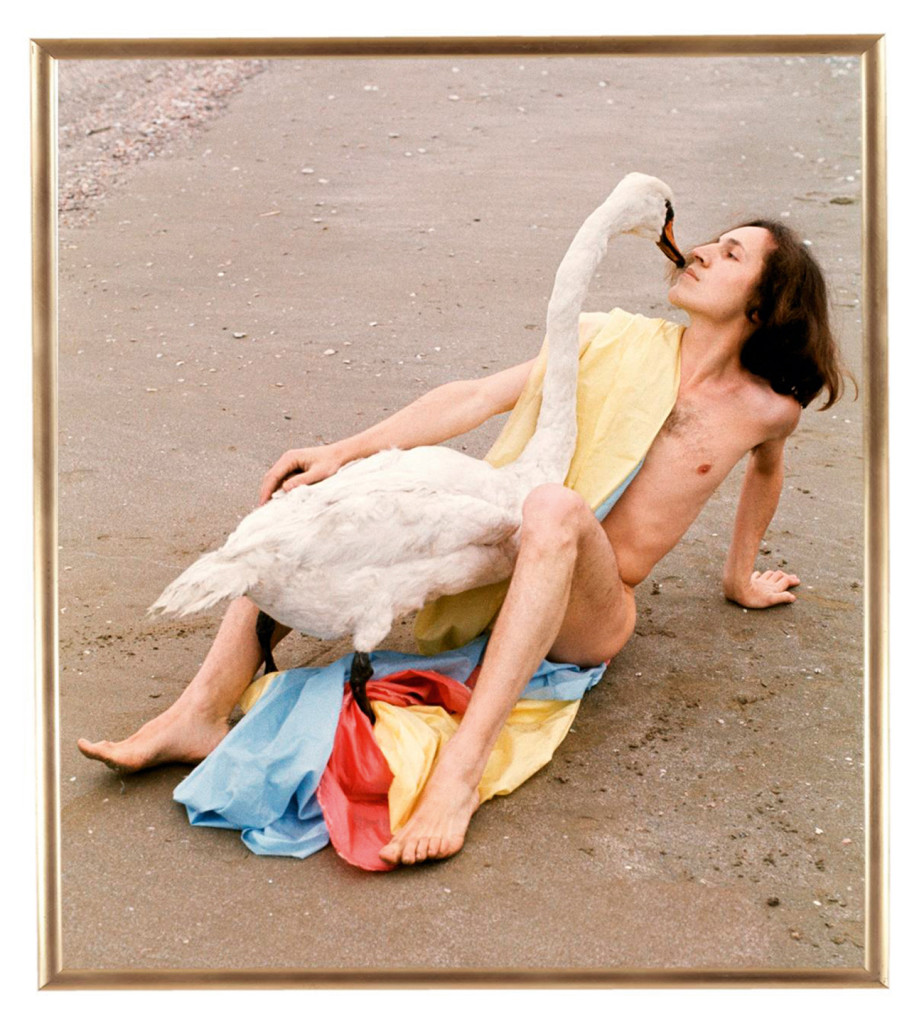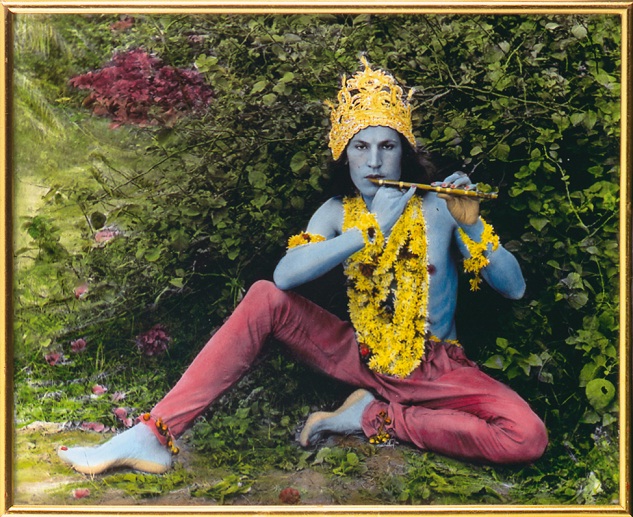The Sublimation of the Self: Luigi Otani
by Sara Rella
I perceive the action of entering the world of a creative mind with questions related to its work as a hazard, the type of hazard that comes along with a sort of excitement — do you really want to try to unveil it through words? When I found myself trying to condensate in a few written questions the interest for one of the most intriguing Italian creative minds, this perception became stronger — the greater amazement arrived after receiving his answers, by his own handwriting scrawled in green ink over my printed draft.
Luigi Ontani is the greatest traveller of Italian contemporary art. The story of his journey is mirrored in the symbols, the myths, and icons of his artworks — shaping the secret rules of a language made to speak only to the initiated. His traveller’s spirit, always eager for new discoveries, doesn’t leave any untried road behind him. From his beginnings with photography in the late 1960s, he went through experimenting with almost all the media and techniques, including his own body in the series of AnamorPoses, in which he uses his figure and face to personify mythical, historical, and literary characters from the Western and the Eastern tradition. In Ontani’s work, the self-portrait becomes the sublimation of the Self as reflected in the otherness. Below is a transcription of our exchange.

Sara Rella: What do you associate with the idea of freedom?
Luigi Ontani: The soul, which is invisible and is the opposite of the imposing Statue of Liberty.
SR: India, along with its myths and aesthetics, is the core center of many of your artworks. Where did your interest towards the arts and culture of the Indian Subcontinent originate?
LO: As an imaginary journey, it goes back to my childhood; then it became a pose. After having travelled through art and anthropology, I dared to rest. I conceived the costumes, the colours through the different hours, in a place that is not ours.

SR: Which is the aspect of the Indian Art that most attracted your interest?
LO: The Art-Eros symbiosis as the ultimate ceremonial thought, also considering critical points of view, or oversights, from Edward Said to Pankaj Mishra.
SR: Which Indian deity would you identify yourself with?
LO: I adore the creation of the idol, the making of the ‘hybrid-idol’, by condensing the ‘hybrid plus idol’ with the mask cast, which is identity, and alterity.
SR: East and West: How did New York inspire your work?
LO: Loving New York, going from nausea to indifference, observing the triumphant thud of rewarded banality, money, but living of Art despite of this.
SR: Someone says that you tend to identify your art with your own life, is it true? Do you look at your life as a piece of art?

LO: A self-ironic artwork, revealing both Vanity and Truth. Ambiguity is coherence.
SR: It seems that the ludic aspect plays an important role in your work, what amuses you?
LO: Strolling along the labyrinthine independent path, the empiric game.
SR: How would you describe yourself today or through which of your artworks?
LO: Through the AnamorPoses, which makes a rite out of the image, the desire, my self, the simulacrum.
Luigi Ontani was born in 1943 in Grizzana Morandi, a small town near Bologna. He began his artistic career in the late Sixties. He lives and works in Rome.